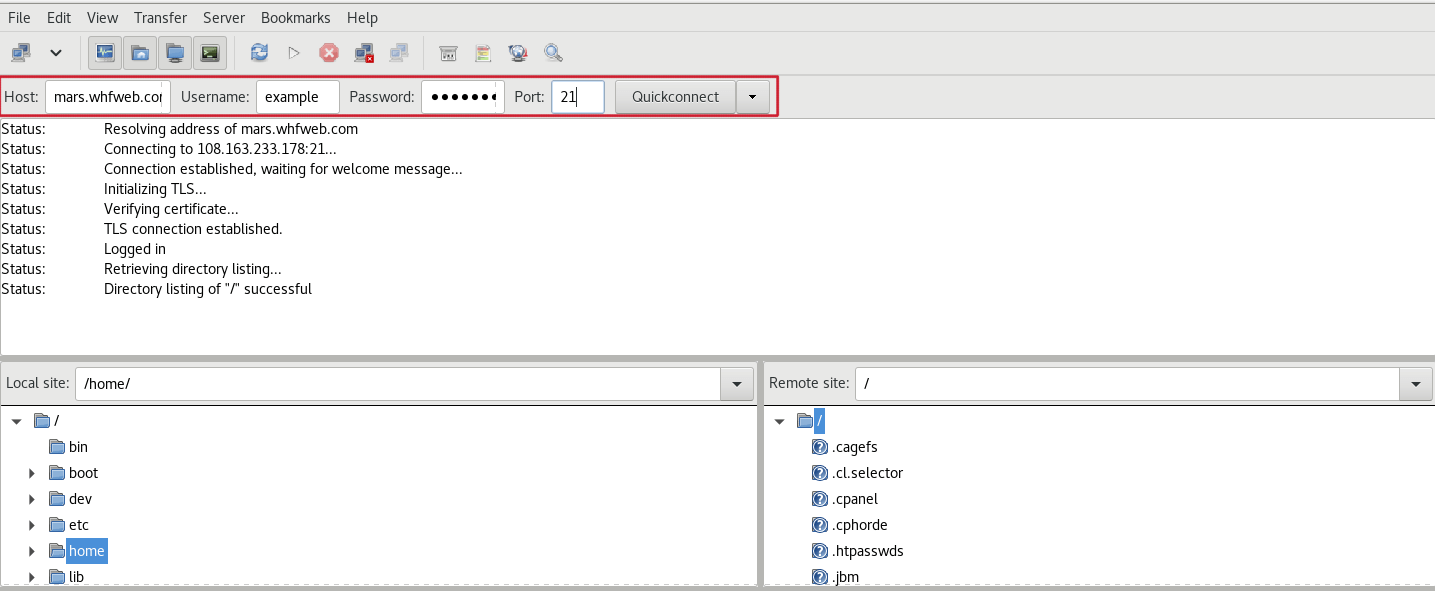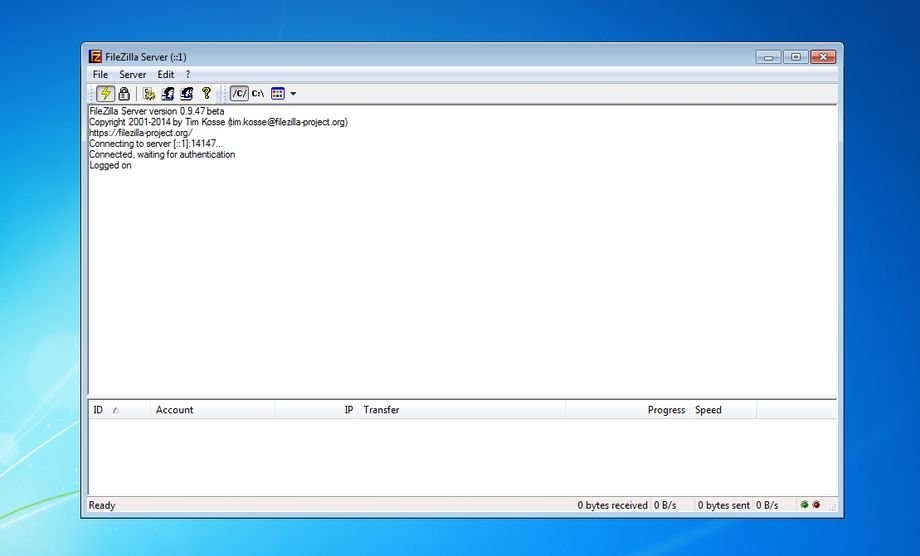

- #Ftp into linux filezilla how to
- #Ftp into linux filezilla software
- #Ftp into linux filezilla password
- #Ftp into linux filezilla windows
The process of connecting WinSCP to an SFTP server is similar if you’re using password authentication, but is a bit different if you’re using key authentication.
#Ftp into linux filezilla windows
WinSCP is one of the most popular FTP clients for Windows users.
#Ftp into linux filezilla how to
How to connect WinSCP to your SFTP server pem file that you created when deploying your SFTP serverĬheck out the GIF below for a visual walkthrough.

#Ftp into linux filezilla software
The next step is to connect your desktop FTP software to the SFTP server you just deployed. How to connect your desktop FTP client to your SFTP server Check out these products if you’re interested in transferring files to Amazon S3 and Azure Blob Storage, respectively. If you’re looking to launch a cloud SFTP server to push files to cloud storage, our products – SFTP Gateway for AWS and SFTP Gateway for Azure – help you do so easily (GCP version coming soon!). You can also spin up a cloud SFTP server. If you’re on Windows, refer to this article from the folks at WinSCP. If you want to set up a local SFTP server and you’re using Linux, check out this article. There are some great tutorials that teach you how to deploy an SFTP server, so we won’t recreate the wheel here. The process of setting up an SFTP server will be different depending on the operating system that you’re using and the desired destination of your files. What you don’t need to change when moving to SFTPĭo you enjoy using FileZilla or WinSCP to move your files? Good! You can still use your desktop FTP client even if you migrate to SFTP.Īll you need to do is launch an SFTP server, connect it to your desktop file transfer software, and you’re off to the races! Options for launching an SFTP server But we believe the increase in security is worth it, and there are now ways to set up SFTP servers easily. SFTP takes a little bit of work to set up and manage. Or you can even combine key-based authentication with usernames and passwords for even more security.Īnd SFTP only uses one server port connection to transfer data, further increasing security and compliance with firewalls.Īlso, you can obtain more metadata, such as date, time, and size, about the files being transferred. You can also use key-based authentication for increased security (which we totally recommend). Usernames, passwords, and files are encrypted using Secure Socket Shell (SSH) so hackers won’t be able to see all of your information. But it still suffers from having to open a range of ports. Usernames, passwords, and files are all sent in plain text, so your data is very susceptible to being intercepted and recognized.Īdditionally, FTP requires a range of ports to remain open and publicly accessible for its data channel to be created, thus potentially leading to more security issues.įTPS layers on a bit more security by adding support for Transport Layer Security (TLS) and its predecessor, Secure Sockets Layer (SSL). While FTP is very easy to use, its biggest drawback is poor security.

All you have to do is click a few buttons and voila – your files get where they need to be. You’re probably using an easy desktop client like FileZilla, WinSCP, or CyberDuck. We get it – you’re very comfortable with your current FTP file transfer setup. Why should you move from FTP or FTPS to SFTP? Making the switch from FTP or FTPS to SFTP is a relatively easy way to increase the security of your file transfers, and this post will show you how. There are plenty of businesses that are still using FTP and FTPS.īut in today’s world, where hacks are a dime a dozen, it makes sense to increase security wherever you can. Migrating to SFTP isn’t as hard as you think, and it’s well worth the increased security.


 0 kommentar(er)
0 kommentar(er)
